Linyuan Wang
Signal Adversarial Examples Generation for Signal Detection Network via White-Box Attack
Oct 02, 2024



Abstract:With the development and application of deep learning in signal detection tasks, the vulnerability of neural networks to adversarial attacks has also become a security threat to signal detection networks. This paper defines a signal adversarial examples generation model for signal detection network from the perspective of adding perturbations to the signal. The model uses the inequality relationship of L2-norm between time domain and time-frequency domain to constrain the energy of signal perturbations. Building upon this model, we propose a method for generating signal adversarial examples utilizing gradient-based attacks and Short-Time Fourier Transform. The experimental results show that under the constraint of signal perturbation energy ratio less than 3%, our adversarial attack resulted in a 28.1% reduction in the mean Average Precision (mAP), a 24.7% reduction in recall, and a 30.4% reduction in precision of the signal detection network. Compared to random noise perturbation of equivalent intensity, our adversarial attack demonstrates a significant attack effect.
Aligned with LLM: a new multi-modal training paradigm for encoding fMRI activity in visual cortex
Jan 08, 2024Abstract:Recently, there has been a surge in the popularity of pre trained large language models (LLMs) (such as GPT-4), sweeping across the entire Natural Language Processing (NLP) and Computer Vision (CV) communities. These LLMs have demonstrated advanced multi-modal understanding capabilities and showcased strong performance across various benchmarks. The LLM has started to embody traits of artificial general intelligence, which holds vital guidance for enhancing brain-like characteristics within visual encoding models. Hence, This paper proposes a new multi-modal training paradigm, aligning with LLM, for encoding fMRI activity in visual cortex. Based on this paradigm, we trained an encoding model in fMRI data named the LLM-Visual Encoding Model (LLM-VEM). Specifically, we utilize LLM (miniGPT4) to generate descriptive text for all stimulus images, forming a high-quality textual description set. Moreover, we use the pre-trained text encoder (CLIP) to process these detailed descriptions, obtaining the text embedding features. Next, we use the contrast loss function to minimize the distance between the image embedding features and the text embedding features to complete the alignment operation of the stimulus image and text information. With the assistance of the pre-trained LLM, this alignment process facilitates better learning of the visual encoding model, resulting in higher precision. The final experimental results indicate that our training paradigm has significantly aided in enhancing the performance of the visual encoding model.
A Multimodal Visual Encoding Model Aided by Introducing Verbal Semantic Information
Aug 29, 2023Abstract:Biological research has revealed that the verbal semantic information in the brain cortex, as an additional source, participates in nonverbal semantic tasks, such as visual encoding. However, previous visual encoding models did not incorporate verbal semantic information, contradicting this biological finding. This paper proposes a multimodal visual information encoding network model based on stimulus images and associated textual information in response to this issue. Our visual information encoding network model takes stimulus images as input and leverages textual information generated by a text-image generation model as verbal semantic information. This approach injects new information into the visual encoding model. Subsequently, a Transformer network aligns image and text feature information, creating a multimodal feature space. A convolutional network then maps from this multimodal feature space to voxel space, constructing the multimodal visual information encoding network model. Experimental results demonstrate that the proposed multimodal visual information encoding network model outperforms previous models under the exact training cost. In voxel prediction of the left hemisphere of subject 1's brain, the performance improves by approximately 15.87%, while in the right hemisphere, the performance improves by about 4.6%. The multimodal visual encoding network model exhibits superior encoding performance. Additionally, ablation experiments indicate that our proposed model better simulates the brain's visual information processing.
Dynamic ensemble selection based on Deep Neural Network Uncertainty Estimation for Adversarial Robustness
Aug 01, 2023



Abstract:The deep neural network has attained significant efficiency in image recognition. However, it has vulnerable recognition robustness under extensive data uncertainty in practical applications. The uncertainty is attributed to the inevitable ambient noise and, more importantly, the possible adversarial attack. Dynamic methods can effectively improve the defense initiative in the arms race of attack and defense of adversarial examples. Different from the previous dynamic method depend on input or decision, this work explore the dynamic attributes in model level through dynamic ensemble selection technology to further protect the model from white-box attacks and improve the robustness. Specifically, in training phase the Dirichlet distribution is apply as prior of sub-models' predictive distribution, and the diversity constraint in parameter space is introduced under the lightweight sub-models to construct alternative ensembel model spaces. In test phase, the certain sub-models are dynamically selected based on their rank of uncertainty value for the final prediction to ensure the majority accurate principle in ensemble robustness and accuracy. Compared with the previous dynamic method and staic adversarial traning model, the presented approach can achieve significant robustness results without damaging accuracy by combining dynamics and diversity property.
MGTAB: A Multi-Relational Graph-Based Twitter Account Detection Benchmark
Jan 03, 2023Abstract:The development of social media user stance detection and bot detection methods rely heavily on large-scale and high-quality benchmarks. However, in addition to low annotation quality, existing benchmarks generally have incomplete user relationships, suppressing graph-based account detection research. To address these issues, we propose a Multi-Relational Graph-Based Twitter Account Detection Benchmark (MGTAB), the first standardized graph-based benchmark for account detection. To our knowledge, MGTAB was built based on the largest original data in the field, with over 1.55 million users and 130 million tweets. MGTAB contains 10,199 expert-annotated users and 7 types of relationships, ensuring high-quality annotation and diversified relations. In MGTAB, we extracted the 20 user property features with the greatest information gain and user tweet features as the user features. In addition, we performed a thorough evaluation of MGTAB and other public datasets. Our experiments found that graph-based approaches are generally more effective than feature-based approaches and perform better when introducing multiple relations. By analyzing experiment results, we identify effective approaches for account detection and provide potential future research directions in this field. Our benchmark and standardized evaluation procedures are freely available at: https://github.com/GraphDetec/MGTAB.
Dynamic Stochastic Ensemble with Adversarial Robust Lottery Ticket Subnetworks
Oct 06, 2022
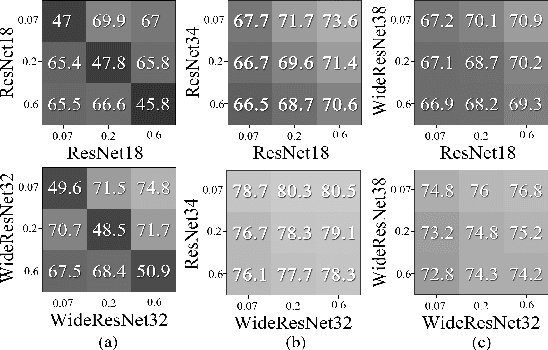
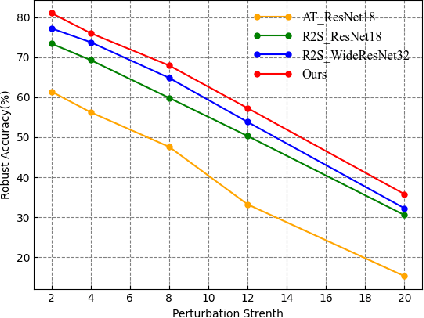

Abstract:Adversarial attacks are considered the intrinsic vulnerability of CNNs. Defense strategies designed for attacks have been stuck in the adversarial attack-defense arms race, reflecting the imbalance between attack and defense. Dynamic Defense Framework (DDF) recently changed the passive safety status quo based on the stochastic ensemble model. The diversity of subnetworks, an essential concern in the DDF, can be effectively evaluated by the adversarial transferability between different networks. Inspired by the poor adversarial transferability between subnetworks of scratch tickets with various remaining ratios, we propose a method to realize the dynamic stochastic ensemble defense strategy. We discover the adversarial transferable diversity between robust lottery ticket subnetworks drawn from different basic structures and sparsity. The experimental results suggest that our method achieves better robust and clean recognition accuracy by adversarial transferable diversity, which would decrease the reliability of attacks.
LRIP-Net: Low-Resolution Image Prior based Network for Limited-Angle CT Reconstruction
Jul 30, 2022
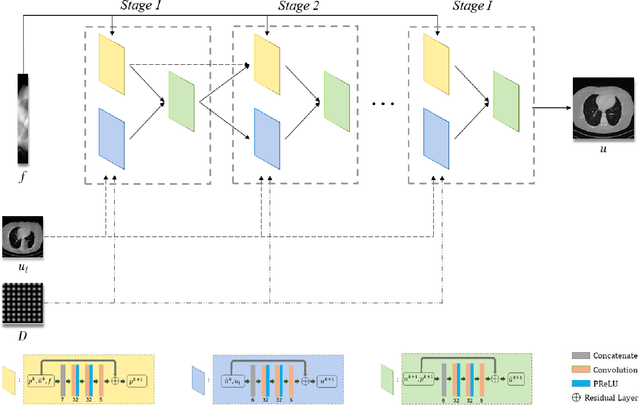
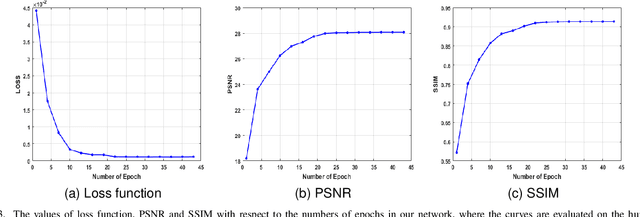
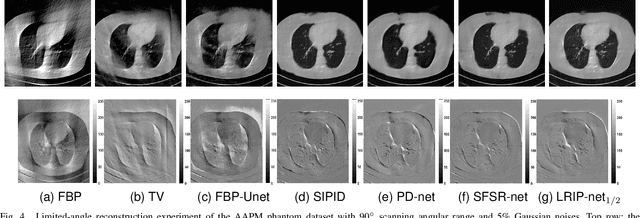
Abstract:In the practical applications of computed tomography imaging, the projection data may be acquired within a limited-angle range and corrupted by noises due to the limitation of scanning conditions. The noisy incomplete projection data results in the ill-posedness of the inverse problems. In this work, we theoretically verify that the low-resolution reconstruction problem has better numerical stability than the high-resolution problem. In what follows, a novel low-resolution image prior based CT reconstruction model is proposed to make use of the low-resolution image to improve the reconstruction quality. More specifically, we build up a low-resolution reconstruction problem on the down-sampled projection data, and use the reconstructed low-resolution image as prior knowledge for the original limited-angle CT problem. We solve the constrained minimization problem by the alternating direction method with all subproblems approximated by the convolutional neural networks. Numerical experiments demonstrate that our double-resolution network outperforms both the variational method and popular learning-based reconstruction methods on noisy limited-angle reconstruction problems.
Select and Calibrate the Low-confidence: Dual-Channel Consistency based Graph Convolutional Networks
May 08, 2022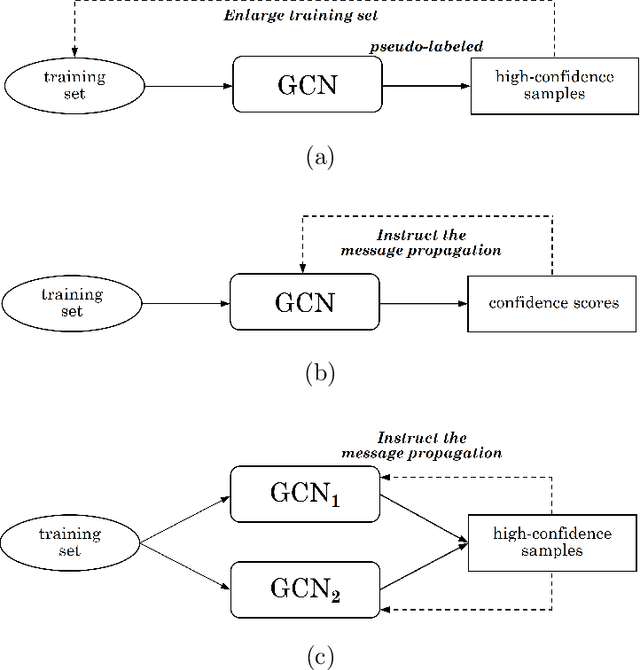
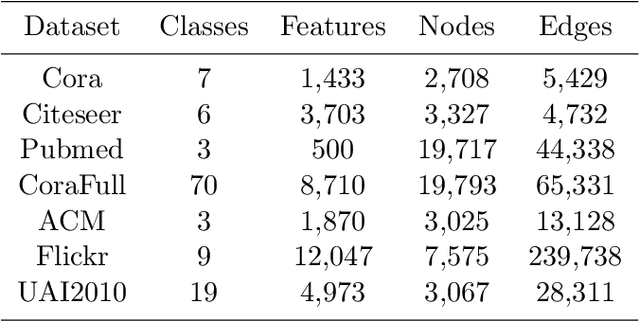
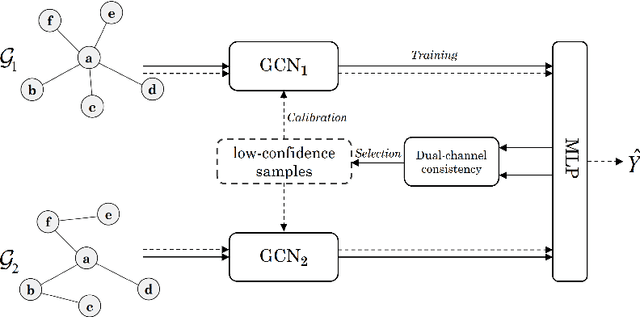

Abstract:The Graph Convolutional Networks (GCNs) have achieved excellent results in node classification tasks, but the model's performance at low label rates is still unsatisfactory. Previous studies in Semi-Supervised Learning (SSL) for graph have focused on using network predictions to generate soft pseudo-labels or instructing message propagation, which inevitably contains the incorrect prediction due to the over-confident in the predictions. Our proposed Dual-Channel Consistency based Graph Convolutional Networks (DCC-GCN) uses dual-channel to extract embeddings from node features and topological structures, and then achieves reliable low-confidence and high-confidence samples selection based on dual-channel consistency. We further confirmed that the low-confidence samples obtained based on dual-channel consistency were low in accuracy, constraining the model's performance. Unlike previous studies ignoring low-confidence samples, we calibrate the feature embeddings of the low-confidence samples by using the neighborhood's high-confidence samples. Our experiments have shown that the DCC-GCN can more accurately distinguish between low-confidence and high-confidence samples, and can also significantly improve the accuracy of low-confidence samples. We conducted extensive experiments on the benchmark datasets and demonstrated that DCC-GCN is significantly better than state-of-the-art baselines at different label rates.
RPT++: Customized Feature Representation for Siamese Visual Tracking
Oct 23, 2021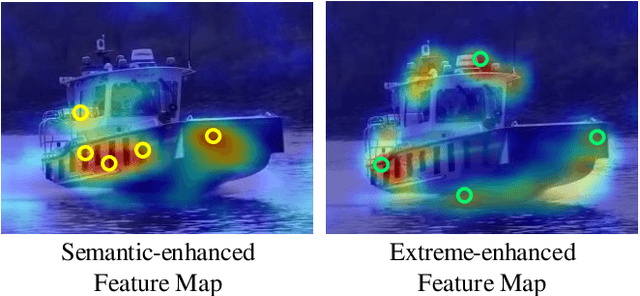

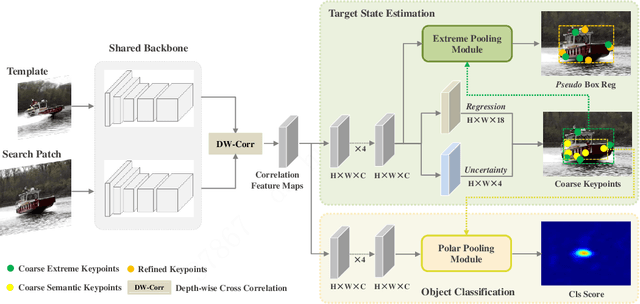

Abstract:While recent years have witnessed remarkable progress in the feature representation of visual tracking, the problem of feature misalignment between the classification and regression tasks is largely overlooked. The approaches of feature extraction make no difference for these two tasks in most of advanced trackers. We argue that the performance gain of visual tracking is limited since features extracted from the salient area provide more recognizable visual patterns for classification, while these around the boundaries contribute to accurately estimating the target state. We address this problem by proposing two customized feature extractors, named polar pooling and extreme pooling to capture task-specific visual patterns. Polar pooling plays the role of enriching information collected from the semantic keypoints for stronger classification, while extreme pooling facilitates explicit visual patterns of the object boundary for accurate target state estimation. We demonstrate the effectiveness of the task-specific feature representation by integrating it into the recent and advanced tracker RPT. Extensive experiments on several benchmarks show that our Customized Features based RPT (RPT++) achieves new state-of-the-art performances on OTB-100, VOT2018, VOT2019, GOT-10k, TrackingNet and LaSOT.
Adaptive Multi-layer Contrastive Graph Neural Networks
Sep 29, 2021



Abstract:We present Adaptive Multi-layer Contrastive Graph Neural Networks (AMC-GNN), a self-supervised learning framework for Graph Neural Network, which learns feature representations of sample data without data labels. AMC-GNN generates two graph views by data augmentation and compares different layers' output embeddings of Graph Neural Network encoders to obtain feature representations, which could be used for downstream tasks. AMC-GNN could learn the importance weights of embeddings in different layers adaptively through the attention mechanism, and an auxiliary encoder is introduced to train graph contrastive encoders better. The accuracy is improved by maximizing the representation's consistency of positive pairs in the early layers and the final embedding space. Our experiments show that the results can be consistently improved by using the AMC-GNN framework, across four established graph benchmarks: Cora, Citeseer, Pubmed, DBLP citation network datasets, as well as four newly proposed datasets: Co-author-CS, Co-author-Physics, Amazon-Computers, Amazon-Photo.
 Add to Chrome
Add to Chrome Add to Firefox
Add to Firefox Add to Edge
Add to Edge